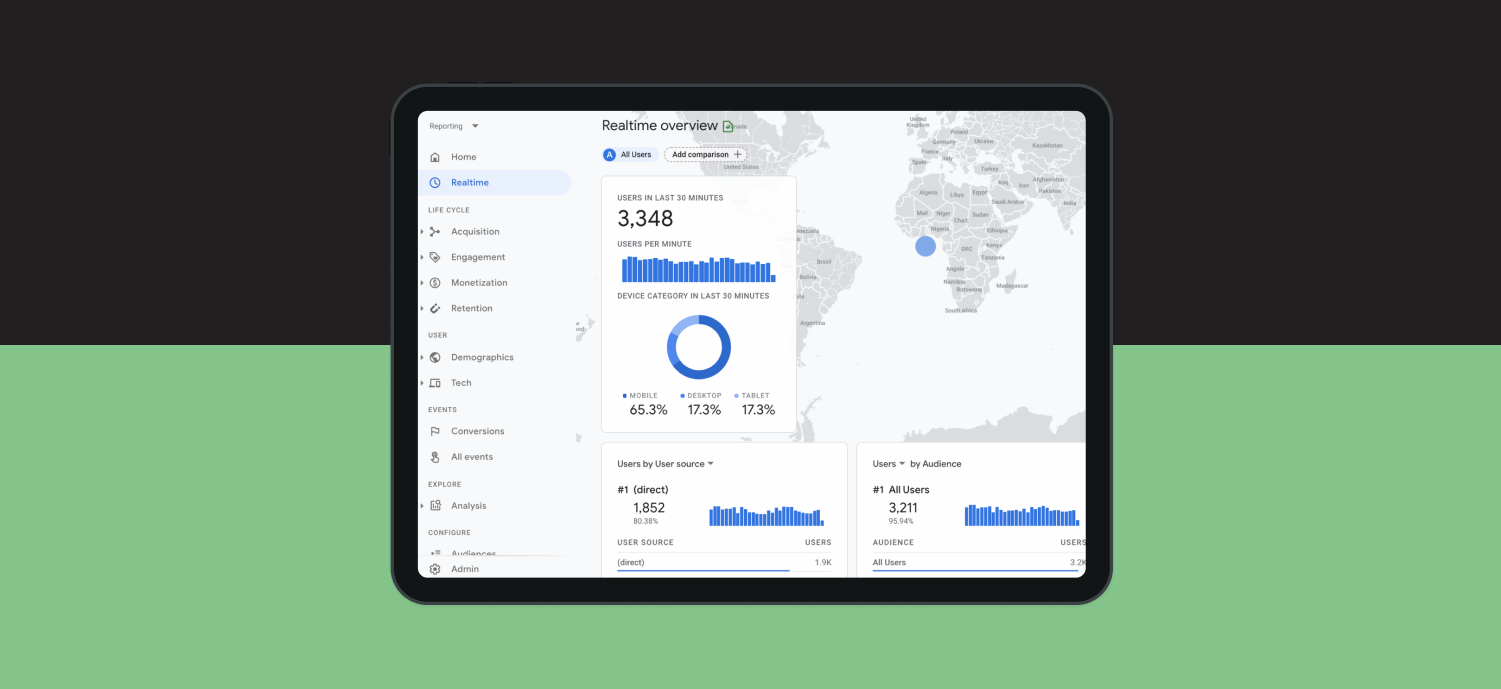2. Better user identification in all reports
In GA4, multiple identity spaces exist together under a single property. GA4 will process data using the best method of user identification they have at their immediate disposal.
First attempting to identify by using your User-ID if you’ve hooked up your own sign-in dialogue, then; if unsuccessful, GA4 will use Google Signals which uses a range of Google accounts such as Gmail which has over 1.8 billion active users.
Finally, if these methods do not work, they will attempt to identify using your device. Overall, this will give a more transparent view than the limited Universal Analytics User-ID implementation.







